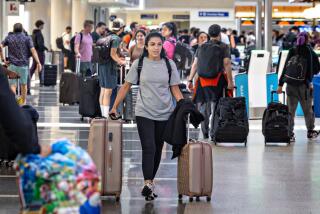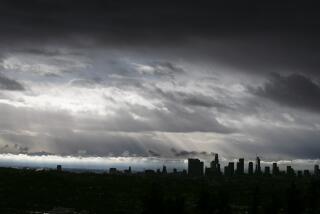Conventions and conferences are back, with changes for the COVID era. Here’s a look inside
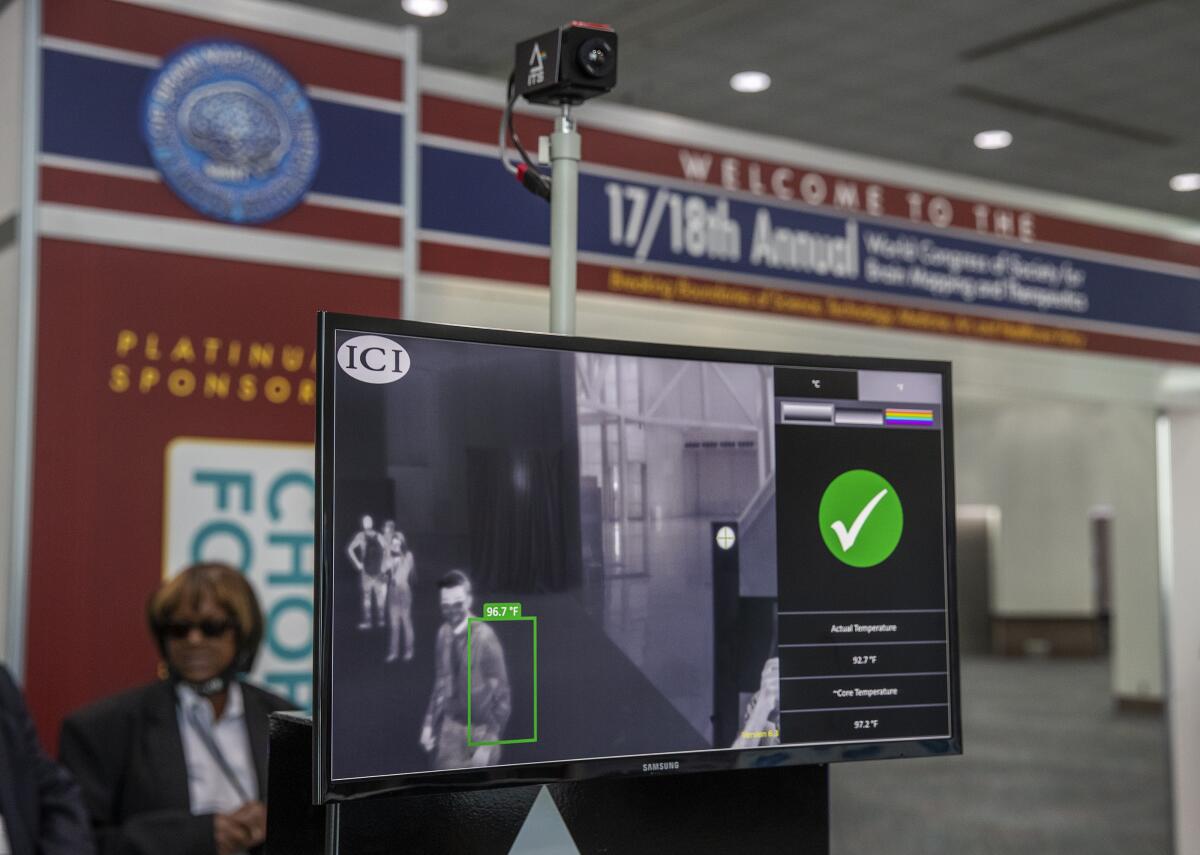
Before walking into a convention of neuroscientists, surgeons and medical technicians at the Los Angeles Convention Center on Friday, Amy Pruszenski had to check in with staff standing behind plexiglass, show proof that she had been vaccinated against COVID-19 and walk past a thermal camera that measured her body temperature.
The gathering was billed as California’s first in-person medical convention since the pandemic struck. Pruszenski, an optometrist from New Hampshire, felt at ease meeting in a large hall — in physically distanced chairs — with hundreds of strangers from across the country.
“I’m feeling completely safe here,” she said. “These are the world’s leading neuroscientists. If anyone is on top of it, they are.”
On the other end of the spectrum was Deborah Zelinsky, an optometrist who stayed home in Illinois and rented an electronic tablet mounted on a remote-controlled robot so she could virtually roll around the convention hall, looking at exhibits and talking to fellow conventioneers.
As the robot bumped into exhibit booths and walls, she said that she wanted to be there but was still not comfortable mingling with others.
The precautions taken at the Los Angeles Convention Center — with the possible exception of the robot — may reflect the future of conventions, trade shows and conferences in California, at least until the pandemic is brought under control.
About 1,000 people usually attend the annual World Congress of the Society for Brain Mapping and Therapeutics; this year, about 200 did, with hundreds more tuning in remotely. The gathering hosted about 900 speakers, nearly 80% of whom spoke via streaming video.
In-person attendees are required to show proof that they’ve been vaccinated against COVID-19 or that they recently tested negative for the virus. Masks are optional, and many attendees wore them. (Los Angeles County health officials encourage even vaccinated people to wear masks indoors as the Delta variant of the virus spreads.)
A thermal camera scans the body temperature of every person entering the meeting rooms or exhibition hall. If the cameras detect someone with a temperature over 100 degrees, guards are alerted.
Each conventiongoer is given a badge emblazoned with a QR code that, when scanned, shows that the person has been cleared to attend.
Organizers expect other large gatherings will adopt similar precautions.
“It’s very important for us to be cautious but not to be fearful,” said Babak Kateb, a neuroscientist and founding chairman of the Society for Brain Mapping and Therapeutics.
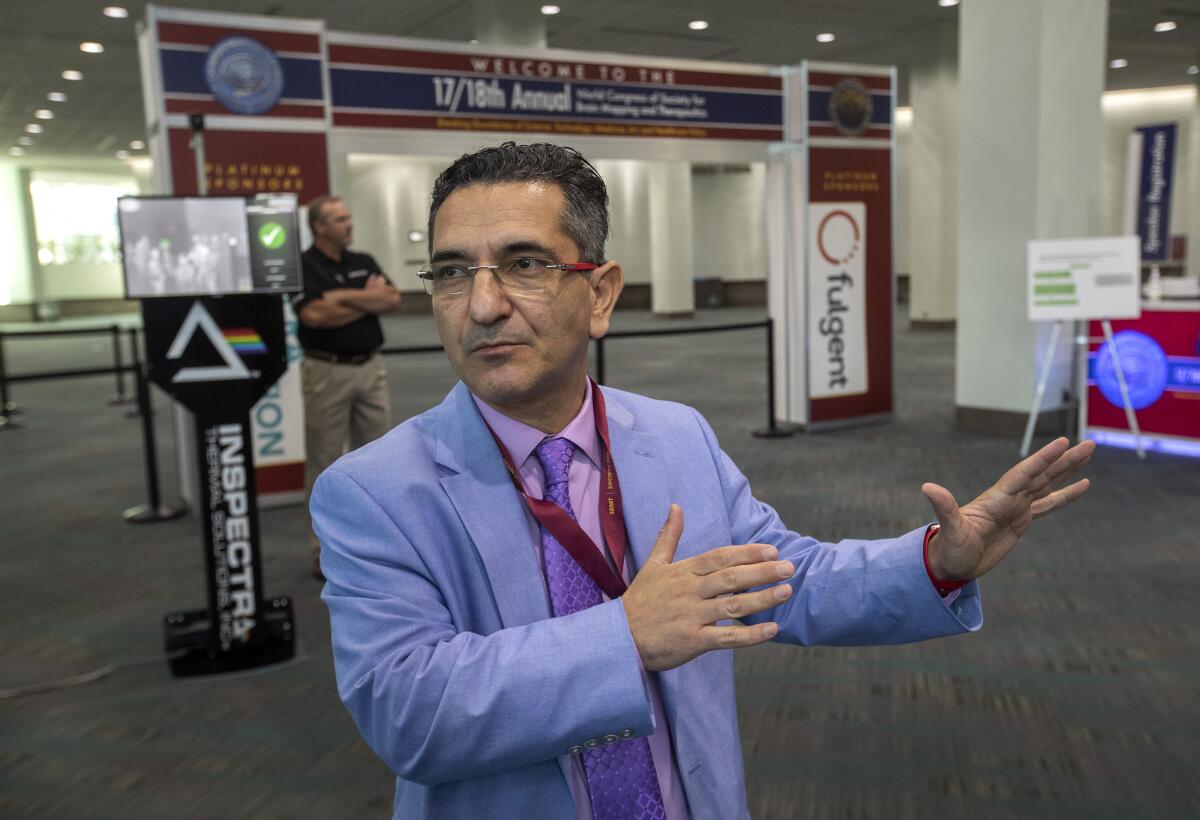
Starting in March 2020, convention centers statewide canceled or postponed every major in-person event and meeting. California lifted most pandemic restrictions on June 15, but so far only a handful of convention centers in the state have hosted in-person events, and those gatherings have been small.
The Ontario Convention Center hosted a small convention in June, attended by about 200 people, with many others watching online.
The Anaheim Convention Center has held several youth sporting events and dance competitions and plans to host a beauty contest this month.
Those two venues, along with the Long Beach Convention Center and the San Diego Convention Center, have larger events on their schedules starting in August. The mega gathering in San Diego known as Comic-Con is set for November.
Before the pandemic struck, conventions, trade shows and business meetings generated $66.1 billion in direct spending in California and supported about 457,000 jobs, according to Oxford Economics, a forecasting company based in the UK. The pandemic has cost convention centers and host cities at least $49.7 billion and 344,000 jobs, according to Oxford Economics.
Although most other pandemic protocols have been lifted, the state still imposes restrictions on indoor “mega events”: gatherings of 5,000 people or more. Attendees must show proof of vaccination or a recent negative coronavirus test result.
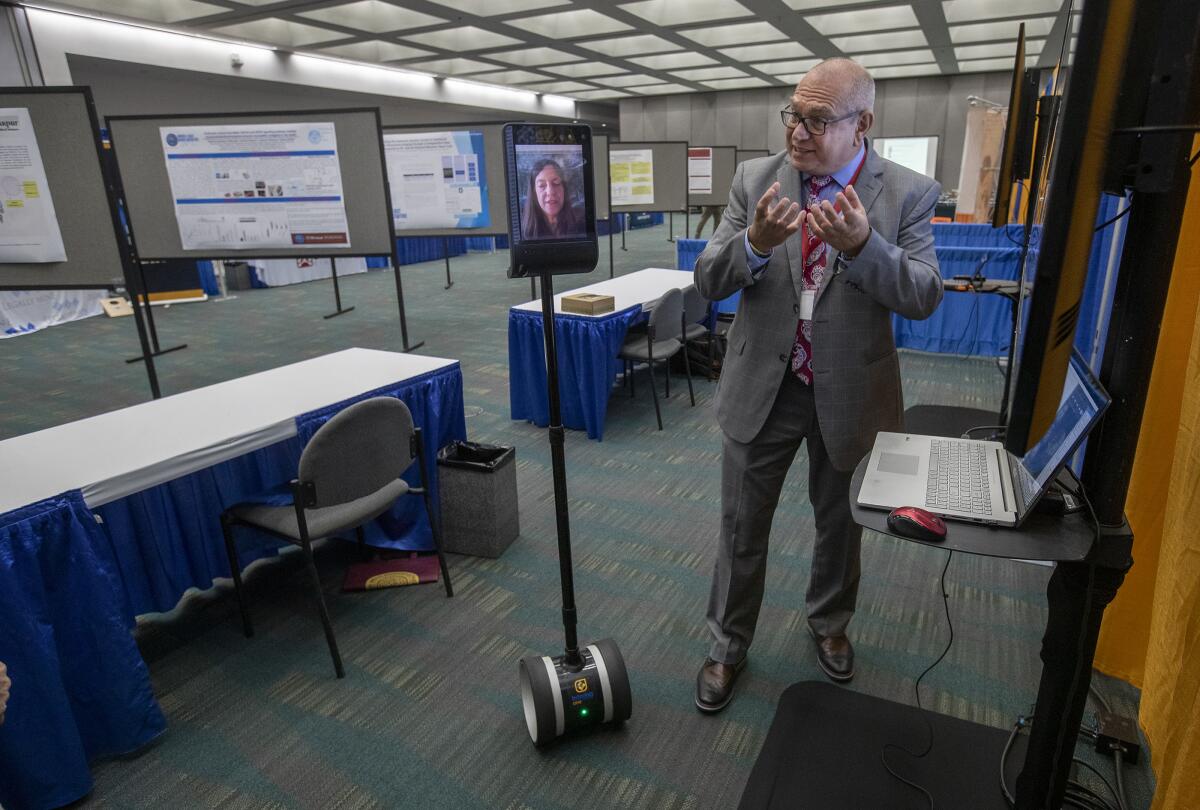
The Los Angeles Convention Center has so far hosted a few sporting events, but the gathering of the Society for Brain Mapping and Therapeutics is its first major in-person convention. The event was sponsored by St. Louis University School of Medicine and Johns Hopkins University School of Medicine. Its speakers included Rep. Ro Khanna (D-Fremont) and author Deepak Chopra.
The exhibitors included companies that develop brain mapping technology and spinal cord implants.
Attendees and exhibitors said they felt comfortable meeting in person again, despite a recent uptick in new coronavirus cases in Los Angeles County.
Cheryl Keel, manager of the intensive care unit at Southern California Hospital at Culver City, said she attended the convention because she missed meeting with colleagues to expand her knowledge of medicine.
“We are at a point in time where we can be cautious and comfortable being out,” she said.
Mike Chen, a surgeon and researcher at City of Hope, said he felt the convention organizers took enough precautions to keep attendees safe.
“We can’t just stop everything,” he said. “Being here is safer than being in a restaurant.”
More to Read
Inside the business of entertainment
The Wide Shot brings you news, analysis and insights on everything from streaming wars to production — and what it all means for the future.
You may occasionally receive promotional content from the Los Angeles Times.
